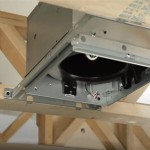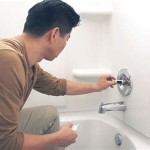Awesome Bathroom Sinks: A Guide to Style and Functionality
The bathroom sink, often referred to as a basin or washbasin, is a fundamental component of any bathroom. Beyond its utilitarian function for washing hands and face, it significantly contributes to the overall aesthetics and functionality of the space. The market offers a wide array of bathroom sinks, each with unique design features, materials, and installation methods. Understanding the different types of sinks and their respective advantages is crucial for selecting the most appropriate option for a given bathroom design and personal preferences.
Choosing the right bathroom sink involves considering a range of factors, including space constraints, budget limitations, desired style, and the plumbing infrastructure. The material of the sink is also a major consideration, influencing durability, ease of maintenance, and overall appearance. From classic porcelain to modern glass, the choices are varied and require careful evaluation.
This article explores different types of bathroom sinks, materials, and key features, providing a comprehensive overview to assist in making an informed decision for your bathroom renovation or construction project.
Understanding the Different Types of Bathroom Sinks
Bathroom sinks are categorized based on their installation method and overall design. Each type offers a distinct aesthetic and functional advantage, catering to different bathroom layouts and preferences.
1. Undermount Sinks: These sinks are installed beneath the countertop, with the rim of the sink attached to the underside of the counter. This configuration creates a seamless transition between the sink and the countertop, facilitating easy cleaning and providing a sleek, modern appearance. Undermount sinks are particularly well-suited for solid-surface countertops such as granite, quartz, or marble. The absence of a visible lip also minimizes water and debris accumulation, contributing to a cleaner countertop surface.
However, undermount sinks require a strong countertop material to support their weight. They also typically require professional installation, as precise cutting and sealing of the countertop are necessary to prevent leaks.
2. Vessel Sinks: Also known as above-counter sinks, vessel sinks sit entirely on top of the bathroom countertop. This design creates a dramatic focal point and adds a touch of elegance to the bathroom. Vessel sinks are available in a wide variety of shapes, sizes, and materials, allowing for considerable design flexibility. They can be constructed from glass, ceramic, stone, metal, or even wood, each offering a unique aesthetic appeal.
While visually striking, vessel sinks require careful consideration of faucet height to ensure comfortable use. Tall faucets or wall-mounted faucets are typically necessary to accommodate the height of the sink. Cleaning around the base of the vessel sink can also be more challenging compared to other sink types.
3. Pedestal Sinks: Pedestal sinks consist of a sink basin supported by a freestanding pedestal. They are a popular choice for smaller bathrooms or powder rooms where space is limited. Pedestal sinks offer a classic and timeless aesthetic, often reminiscent of traditional bathroom designs.
One of the primary advantages of pedestal sinks is their space-saving design. However, they typically lack built-in storage space, which may require the addition of separate storage solutions in the bathroom. Installation is relatively straightforward, but proper alignment and secure mounting are essential for stability.
4. Wall-Mounted Sinks: These sinks are directly attached to the wall, freeing up floor space and creating a minimalist, contemporary look. Wall-mounted sinks are ideal for small bathrooms or for creating an open and airy feel. They offer the flexibility to adjust the sink height to accommodate users of different heights.
Proper wall reinforcement is crucial for supporting the weight of a wall-mounted sink, especially when filled with water. Installation requires careful planning and execution to ensure structural integrity and prevent potential leaks. Plumbing lines are typically exposed beneath the sink, which may require a decorative trap or shroud to conceal them.
5. Console Sinks: Console sinks combine the functionality of a pedestal sink with the storage benefits of a vanity. They feature a sink basin supported by legs or a frame, with a countertop area for storing toiletries and other bathroom essentials. Console sinks offer a balanced combination of style and practicality.
The legs or frame of a console sink provide structural support while allowing for some open space underneath. This design can make the bathroom feel more spacious compared to a full vanity. Console sinks are available in a variety of styles, from traditional to contemporary, to complement different bathroom decors.
6. Drop-In Sinks: Also known as self-rimming sinks, drop-in sinks are installed into a pre-cut hole in the countertop. The rim of the sink rests on the countertop, providing a secure and stable installation. Drop-in sinks are relatively easy to install and offer a variety of design options.
The visible rim of the sink can create a slight barrier that may require more frequent cleaning. However, drop-in sinks are a cost-effective option and can be easily replaced if desired. They are compatible with a wide range of countertop materials.
Exploring the Materials Used in Bathroom Sinks
The material of a bathroom sink significantly impacts its durability, appearance, and maintenance requirements. Each material offers a unique set of characteristics that should be considered when making a selection.
1. Porcelain: Porcelain is a classic and widely used material for bathroom sinks. It is a type of ceramic that is fired at high temperatures, resulting in a durable, non-porous surface. Porcelain sinks are resistant to stains, scratches, and chipping, making them a practical choice for high-traffic bathrooms. They are also relatively easy to clean and maintain.
Porcelain sinks are typically available in white and various shades of white, offering a clean and timeless aesthetic. While durable, porcelain can be susceptible to damage from impact. However, minor chips can often be repaired.
2. Vitreous China: Vitreous china is a type of porcelain that has been treated with a glaze to create an even more durable and non-porous surface. This additional layer of protection makes vitreous china sinks even more resistant to stains, scratches, and bacteria growth. They are also easier to clean and maintain than standard porcelain sinks.
Vitreous china sinks are a popular choice for both residential and commercial bathrooms due to their durability and ease of maintenance. They are available in a variety of colors and styles to complement different bathroom designs.
3. Stone: Stone sinks, such as those made from granite, marble, or travertine, offer a luxurious and natural aesthetic. Each stone sink is unique, with variations in color, veining, and texture. Stone sinks are durable and resistant to heat, but they can be porous and require regular sealing to prevent staining.
Stone sinks are a significant investment due to the cost of the material and the specialized fabrication required. They are best suited for bathrooms with a high-end design aesthetic. Proper care and maintenance are essential to preserve the beauty and integrity of stone sinks.
4. Glass: Glass sinks offer a modern and contemporary aesthetic. They are available in a variety of shapes, sizes, and colors, allowing for considerable design flexibility. Glass sinks can be clear, frosted, or textured, adding visual interest to the bathroom.
While glass sinks are visually appealing, they can be more susceptible to scratches and water spots than other materials. Regular cleaning is necessary to maintain their appearance. Tempered glass is typically used for bathroom sinks to ensure durability and safety.
5. Stainless Steel: Stainless steel sinks are a popular choice for modern and industrial-style bathrooms. They are durable, stain-resistant, and easy to clean. Stainless steel sinks are also relatively lightweight and resistant to corrosion.
Stainless steel sinks can be prone to water spots and scratches, but regular cleaning can help to minimize these issues. They are a cost-effective and practical option for high-traffic bathrooms.
6. Cast Iron: Cast iron sinks are known for their durability and heat retention. They are made by pouring molten iron into a mold and then coating it with a layer of enamel. Cast iron sinks are heavy and require strong support, but they can last for many years with proper care.
Cast iron sinks are available in a variety of colors and styles, offering a classic and timeless aesthetic. They are a popular choice for traditional and vintage-style bathrooms.
Key Features to Consider When Choosing a Bathroom Sink
Beyond the type and material of the sink, several key features should be considered to ensure that the chosen sink meets specific needs and preferences.
1. Size and Shape: The size and shape of the bathroom sink should be proportional to the size of the bathroom and the countertop area. Smaller bathrooms may benefit from compact sinks or wall-mounted sinks to maximize space. Larger bathrooms can accommodate larger sinks with more elaborate designs.
The shape of the sink can also impact its functionality. Round sinks are often more space-efficient, while rectangular sinks provide a larger washing area. The choice of shape should be based on personal preferences and the overall design of the bathroom.
2. Faucet Compatibility: The faucet and sink must be compatible in terms of style, size, and installation requirements. Some sinks have pre-drilled holes for faucets, while others require wall-mounted faucets. The number and placement of faucet holes should be considered when selecting a sink and faucet combination.
The height of the faucet spout should also be appropriate for the depth of the sink to prevent splashing. It is advisable to purchase the sink and faucet together to ensure proper compatibility.
3. Overflow Drain: An overflow drain is a small hole located near the top of the sink basin that prevents water from overflowing if the drain is accidentally blocked. Sinks with overflow drains are particularly useful in bathrooms where children or elderly individuals may be using the sink.
The overflow drain should be regularly cleaned to prevent the buildup of debris and bacteria. Some sinks have a concealed overflow drain for a cleaner aesthetic.
4. Storage Space: The amount of storage space required in the bathroom is a crucial consideration when choosing a sink. Pedestal sinks offer minimal storage, while vanities provide ample storage for toiletries and other bathroom essentials. Console sinks offer a compromise between the two.
If storage space is limited, consider adding separate storage solutions such as shelves or cabinets to complement the sink.
5. Accessibility: For individuals with mobility limitations, it is important to choose a sink that is accessible and easy to use. Wall-mounted sinks with adjustable height are a good option for accommodating users of different heights and wheelchair users. The sink should also have adequate knee clearance underneath.
Lever-handled faucets are easier to operate than traditional knob-style faucets for individuals with limited dexterity.
By carefully considering the different types of bathroom sinks, materials, and key features, it is possible to select a sink that meets both functional and aesthetic requirements. A well-chosen bathroom sink can enhance the overall design of the space and provide years of reliable use.

Coolest Bathroom Sinks Sink Design

10 Futuristic Bathroom Sinks

Awesome Sink Bathroom Design Spiral

51 Bathroom Sinks That Are Overflowing With Stylistic Charm

10 Amazing Modern Bathroom Sinks For A Luxurious Home Stunning Homes

Unusual And Creative Bathroom Sinks

51 Bathroom Sinks That Are Overflowing With Stylistic Charm

Unusual And Creative Bathroom Sinks

Unusual And Creative Bathroom Sinks

51 Bathroom Sinks That Are Overflowing With Stylistic Charm
Related Posts







